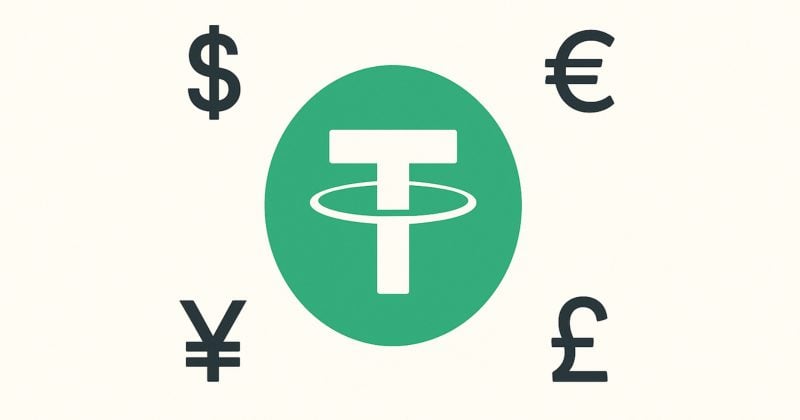Share this article
For the first time in modern market history, foreign-exchange desks and decentralized liquidity pools are eyeing the same instrument: Tether’s USDT. What started as a simple way for crypto traders to sidestep volatility has grown into a $115-plus-billion liquidity layer that sits at the crossroads of DeFi and traditional FX. If you manage a multi-asset portfolio, ignoring that bridge is no longer an option.
Why FX Desks Care About Stablecoins
Stablecoins are, in effect, private currencies whose peg is policed by arbitrageurs instead of central banks. For FX traders accustomed to tight spreads on majors like EUR/USD, that sounds suspiciously risky until you notice that USDT turnover on major exchanges now regularly tops the spot volume of mid-tier fiat pairs such as AUD/CHF. Put differently, the market already treats Tether as a quasi-dollar that trades 24/7 and settles within minutes on-chain or seconds on Layer-2 networks. That combination of speed and constant accessibility fills the one missing piece in legacy FX: after-hours liquidity and the ability to trade Forex with USDT just as seamlessly as with traditional currency pairs.
The Mechanics of Portfolio Integration
Traditional portfolio theory treats cash as a risk-free anchor; crypto allocators often default to bitcoin or ether as their base currency. In practice, both camps are being drawn toward a third alternative: using USDT as a functional grease between asset classes. Suppose an investment desk rebalances weekly between S&P 500 futures, spot gold, and a basket of DeFi governance tokens. Moving into and out of each sleeve in fiat creates exposure to bank wire cut-off times, while moving through BTC introduces unbudgeted volatility.
By routing trades through USDT on venues like Binance, dYdX, or institutional OTC desks, managers can drop settlement time from two days to two minutes, keep dollar exposure intact, and avoid slippage that would otherwise leak alpha. For portfolios that allocate to yield-bearing protocols such as Aave or Maker, parking idle cash in USDT liquidity pools can also produce mid-single-digit returns without forcing the fund to leave the crypto ecosystem.


Risk Dashboard: Beyond the Peg
No discussion of Tether is complete without addressing the elephants in the room: reserve composition, regulatory scrutiny, and potential de-pegs. While USDT has preserved its parity through multiple market panics, including the Terra collapse and multiple bank runs on centralized exchanges, its opacity still worries risk managers.
The most recent attestation shows a majority of reserves in U.S. Treasury bills, but short-term secured loans and other assets remain. That structure is materially safer than it was in 2017, yet it is not identical to holding dollars at the Fed. The right response is to treat USDT as a high-quality liquid asset, not a risk-free one.
Practical safeguards include splitting stablecoin exposure across on-chain vaults with real-time monitoring, setting automated stop-losses that convert USDT to USDC or true fiat when spreads widen beyond 50 basis points, and keeping enough bank liquidity on standby to meet redemption requests even if blockchain rails are congested.
FX Strategies Powered by On-Chain Dollars
One of the more creative ways institutional desks are using USDT is synthetic carry trading. An asset manager can borrow USDT at 3% on a centralized lending venue, convert it to Thai baht through Binance Convert, and deposit the baht into a high-yield local cash fund paying 6%, pocketing a 3-point spread while keeping settlement risk low. Because USDT settles faster than SWIFT, the desk can unwind the trade in minutes if the spread compresses.
Meanwhile, DeFi arbitrageurs exploit price differences between USDT/USDC pools on Curve and the offshore yuan tethered on-chain as CNH-T, effectively creating a decentralized version of the classic dollar/renminbi NDF trade. These examples highlight that Tether is not merely a parking lot; it is a portable slice of dollar liquidity that can be deployed wherever global yields are most attractive.
Implementation Checklist
Before plugging USDT into your mandate, draft a policy that answers four questions: custody, compliance, connectivity, and contingency. Custody: Will tokens live on a self-managed hardware wallet, with a prime broker like Fireblocks, or across multiple venues? Compliance: does your jurisdiction treat stablecoins as money, securities, or something in between, and do your reporting templates capture on-chain movements? Connectivity: ensure your OMS can talk to both decentralized exchanges via smart-contract plugins and centralized venues via FIX. Contingency: rehearse manual redemption flows in case automated rails malfunction Today.
Share this article





